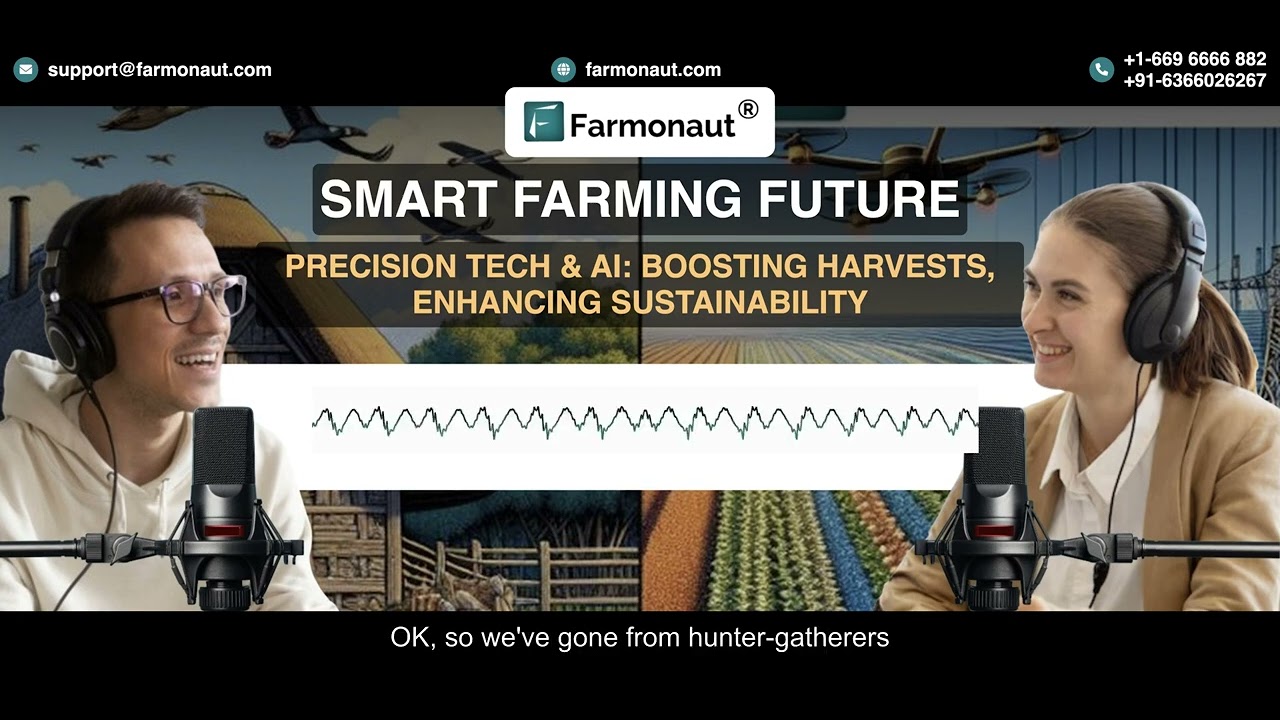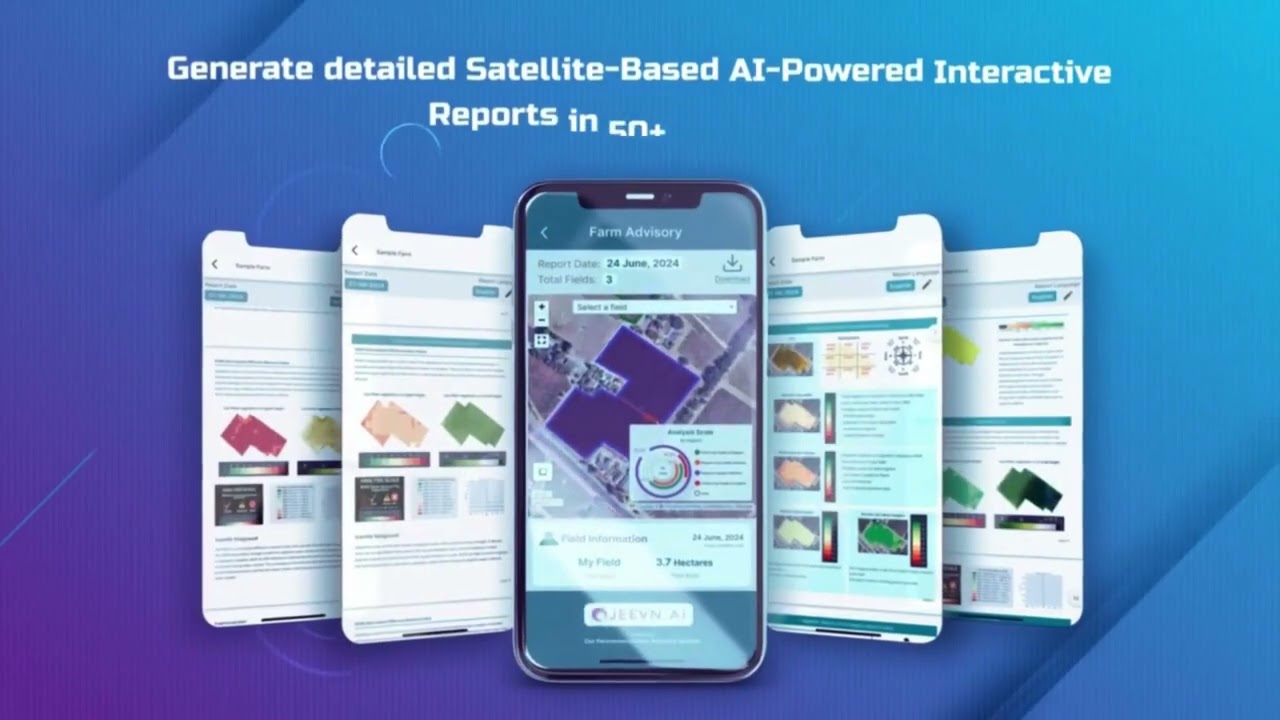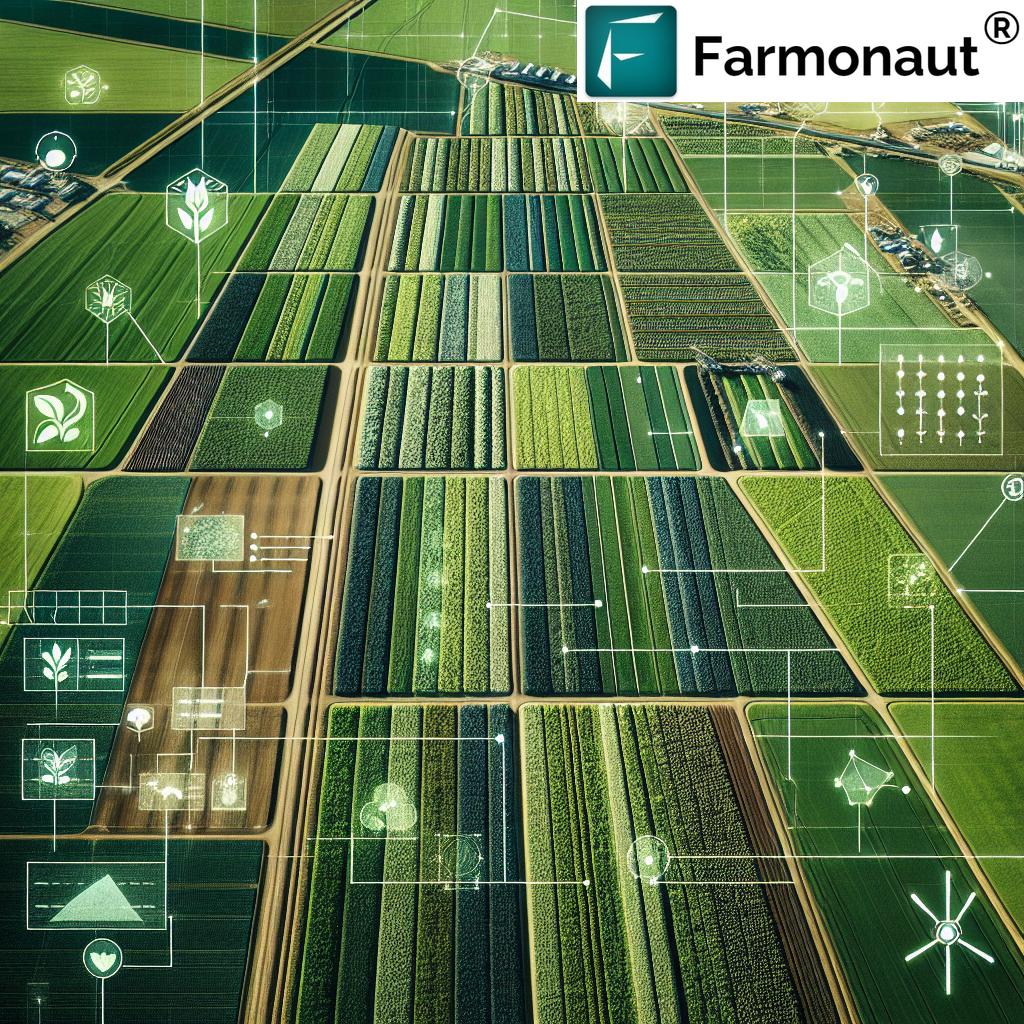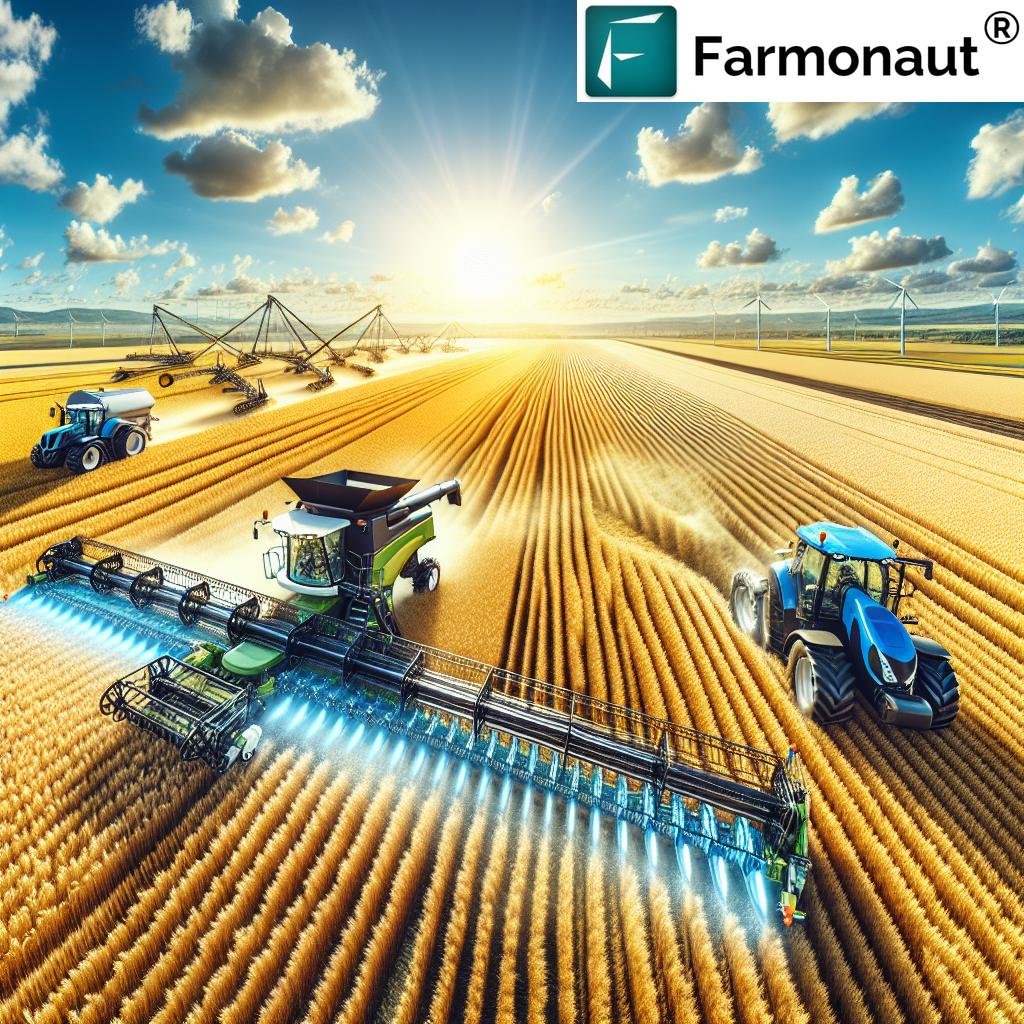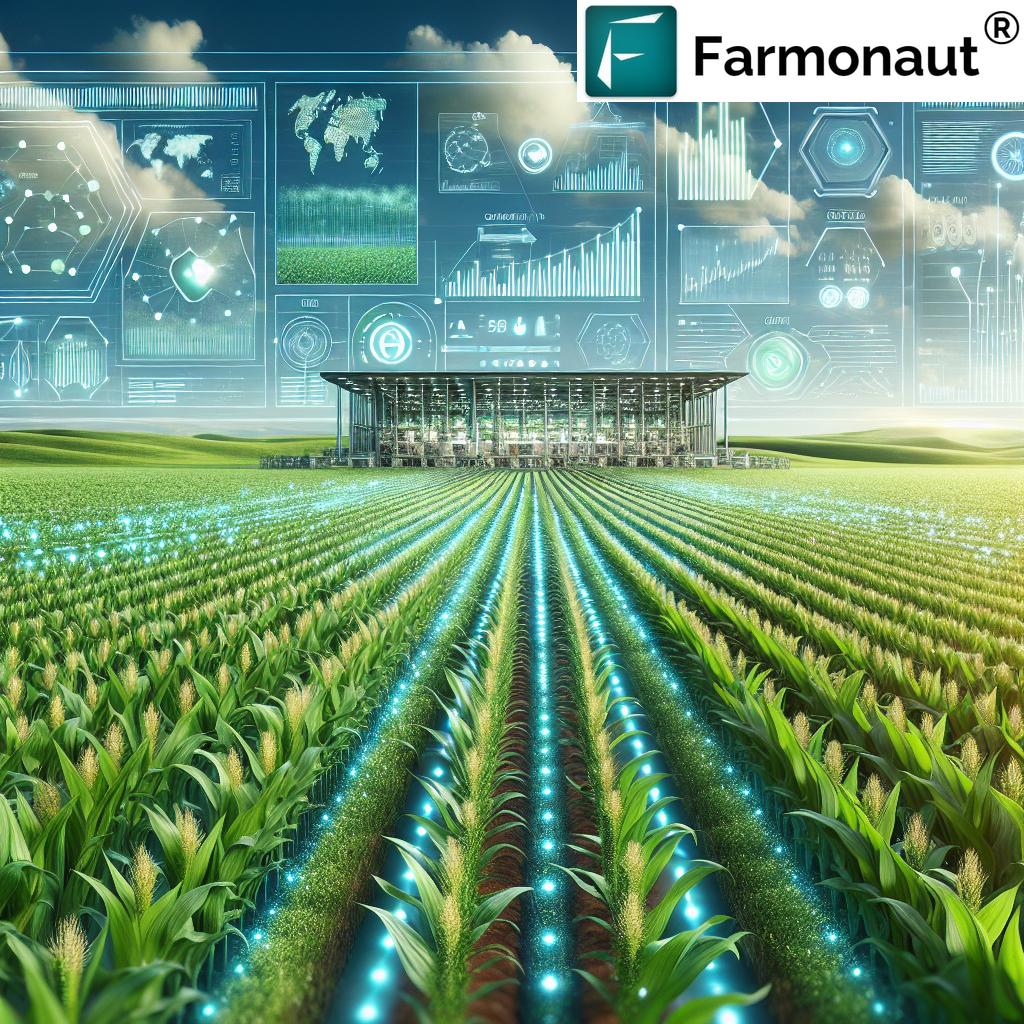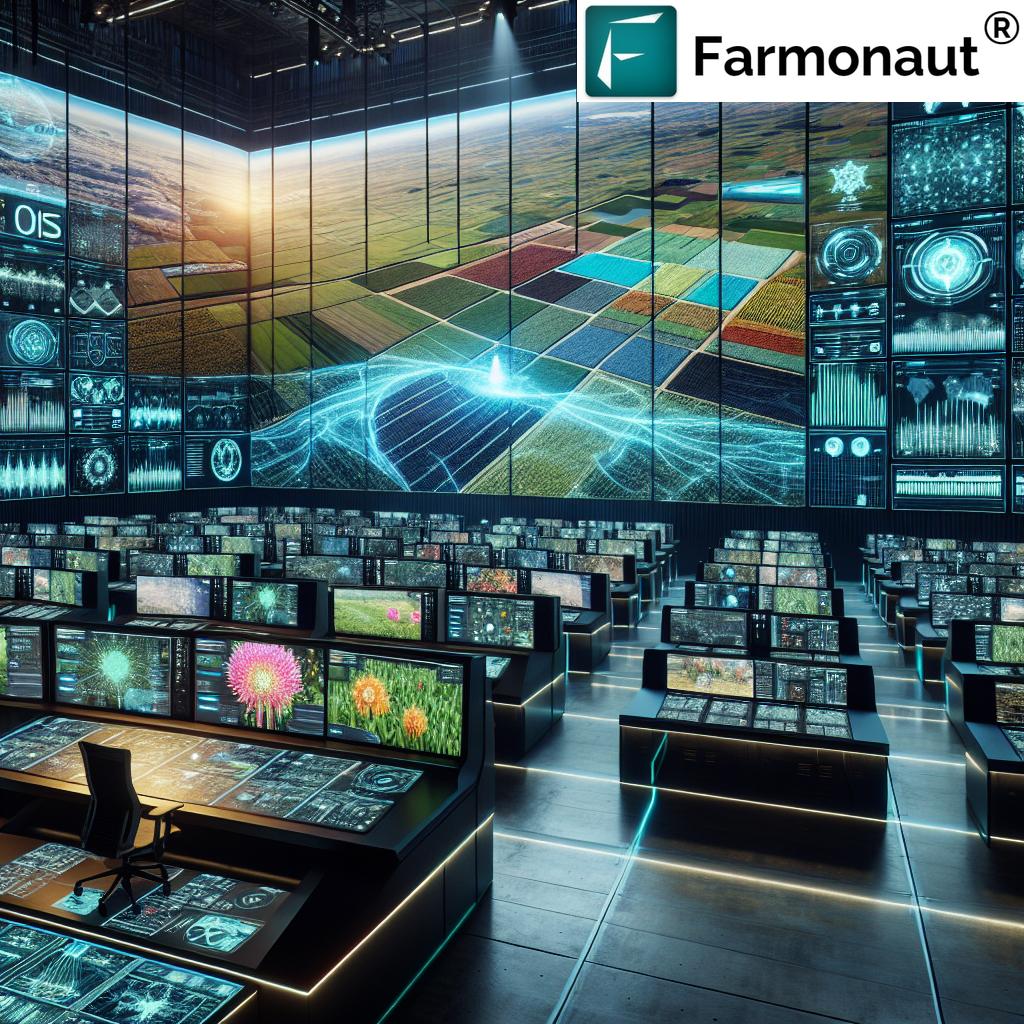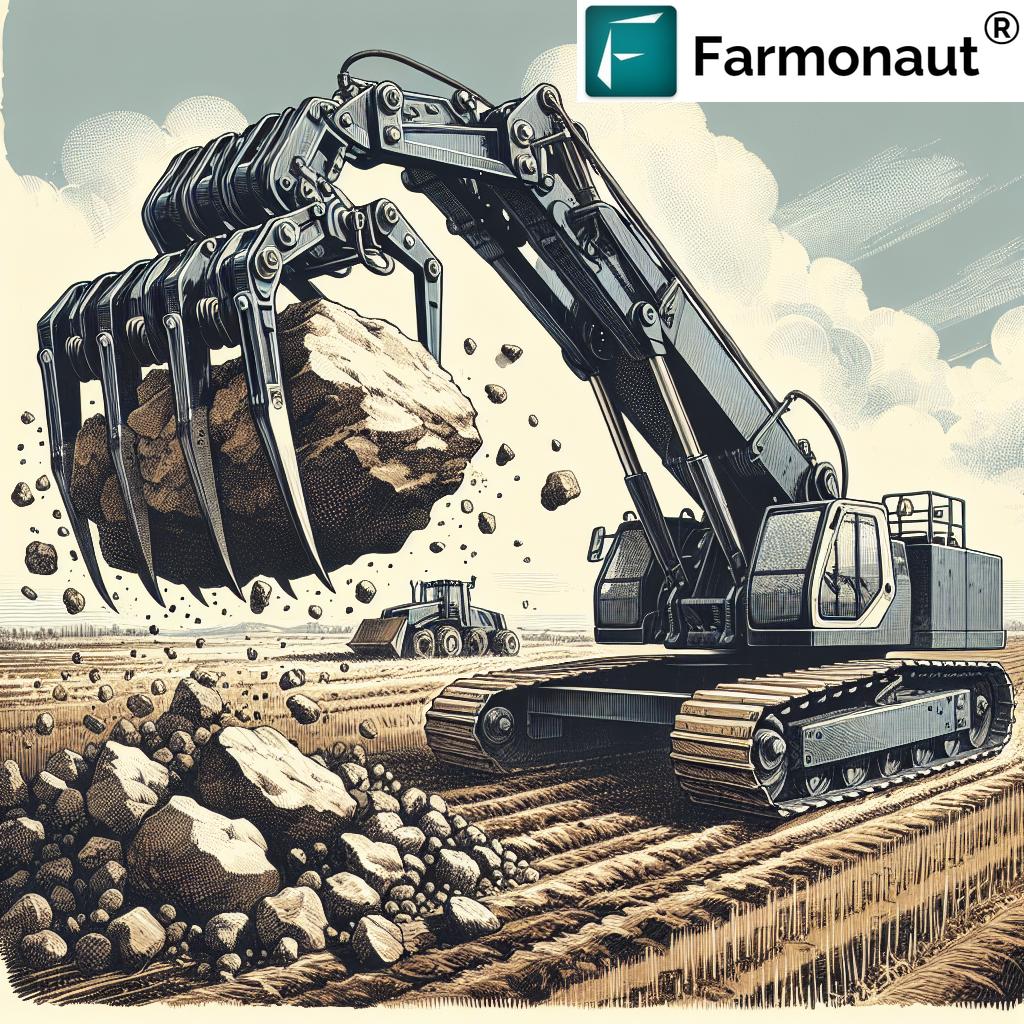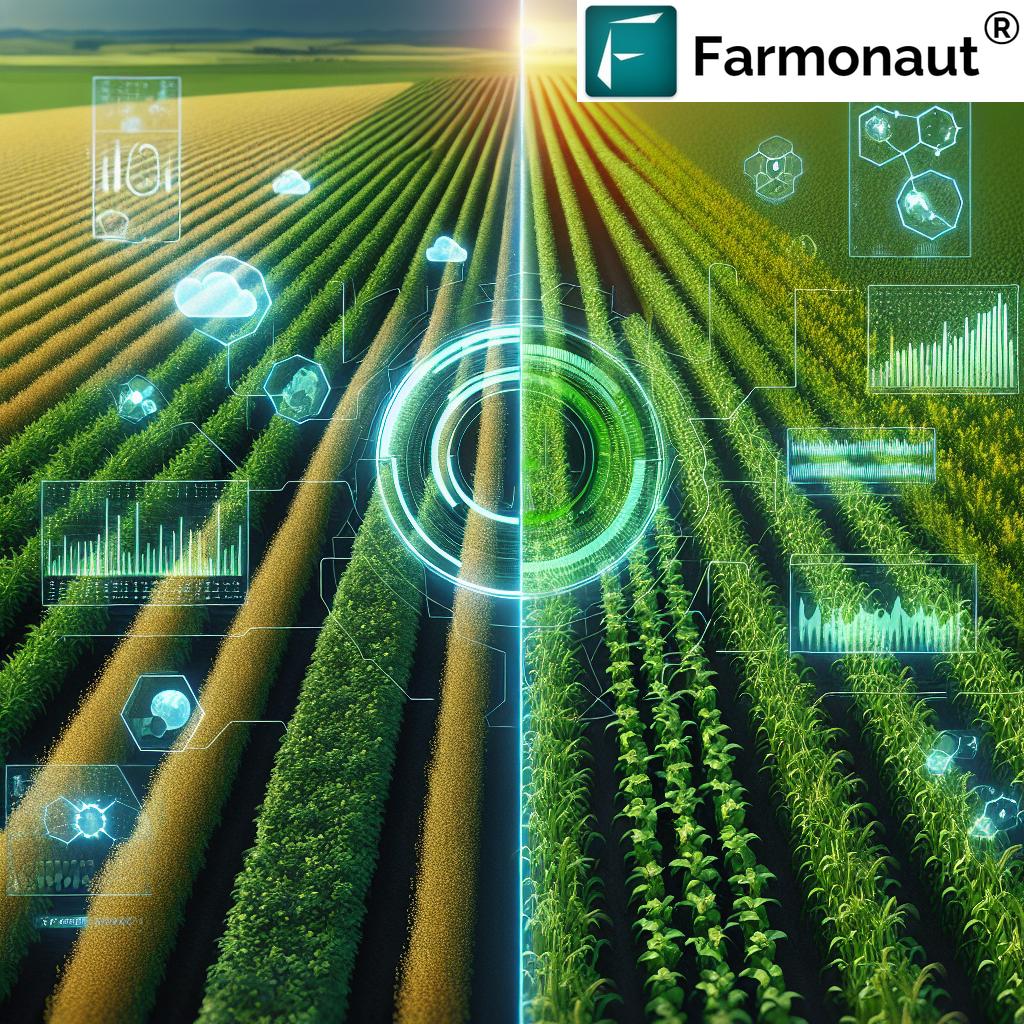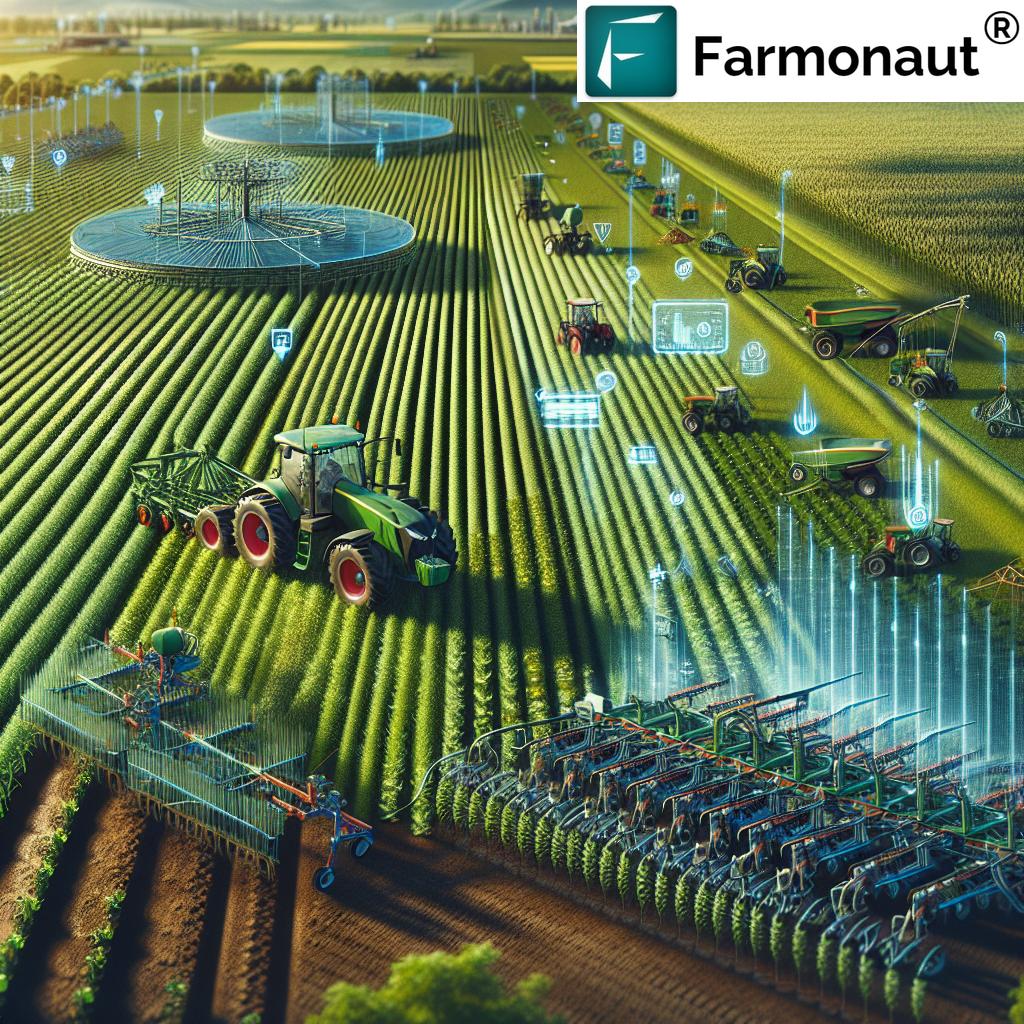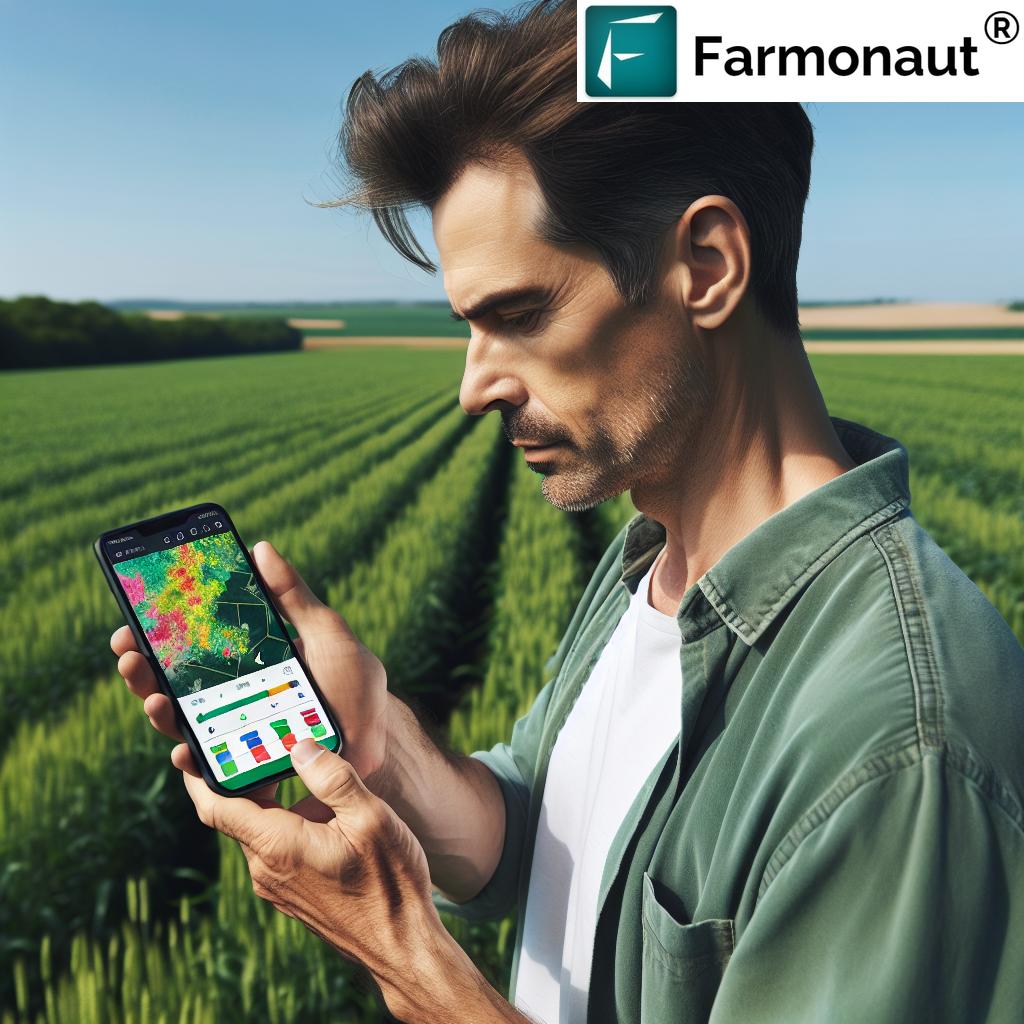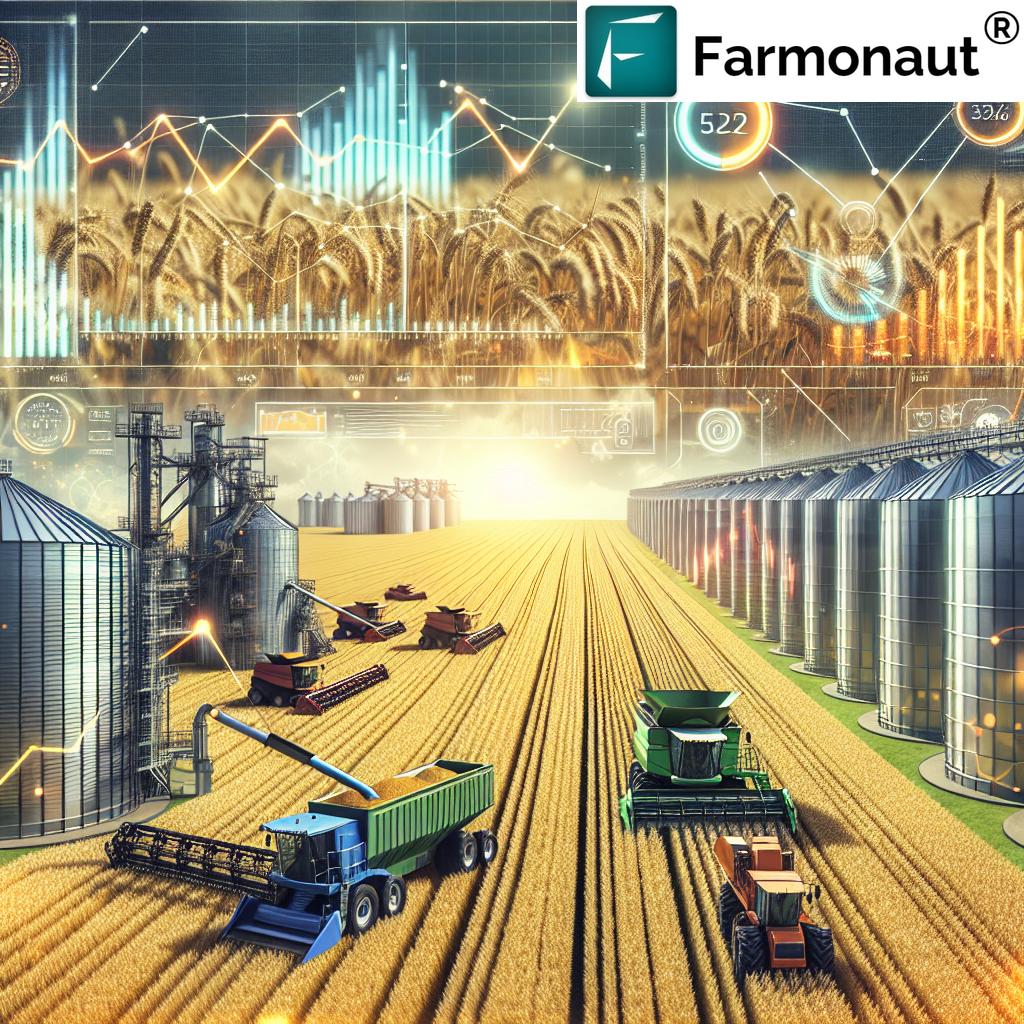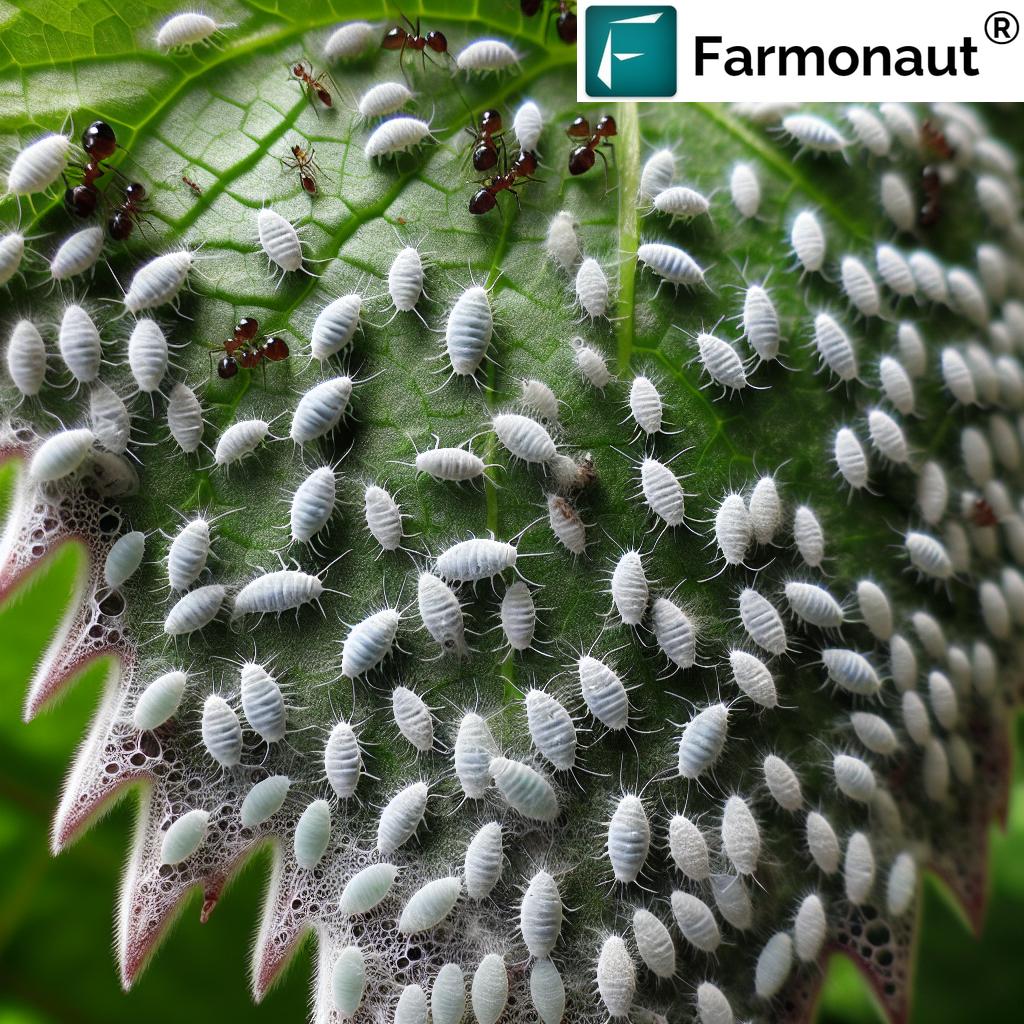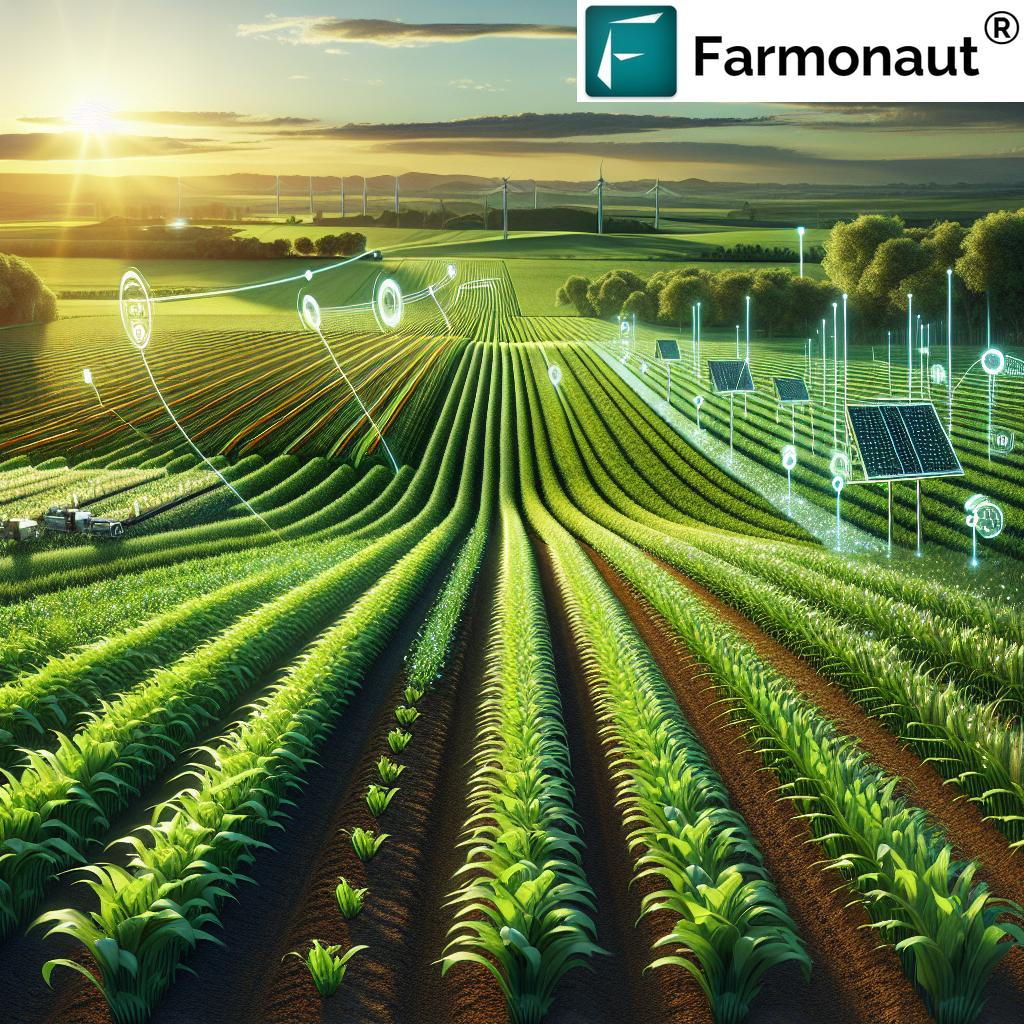Autonomous Agriculture Drone: 5 Ways Shaping Future Farming
“By 2025, over 200,000 autonomous agriculture drones are projected to be in use globally.”
- Introduction: A Revolution in the Fields
- What Are Autonomous Agriculture Drones?
- How Autonomous Drones Are Reshaping Agriculture
- Comparative Table: Key Tech Benefits
- Advantages and Future Trends
- Challenges in Adoption: Barriers & the Road Forward
- How Farmonaut Supports Autonomous Agriculture
- FAQs: Autonomous Agriculture Drones
- Conclusion: Transforming Farming in 2025 and Beyond
Introduction: A Revolution in the Fields
The future of autonomous drones in agriculture has arrived at an unprecedented pace, bringing transformative tools and solutions to modern farming. As the global population continues its unstoppable rise, the demand for food production—and the pressure on farmers to deliver—has never been greater. In response, advanced technologies like the autonomous agriculture drone are revolutionizing how we manage soil, crops, and resources, marking a new era of data-driven, efficient, and sustainable agricultural practices.
Drones, equipped with cutting-edge AI, sensors, and machine learning algorithms, have emerged as indispensable assets across the agricultural landscape. These autonomous aerial vehicles are not just futuristic novelties—they are rapidly becoming foundational to efficient farm management, reducing costs, enhancing yields, and enabling sustainable stewardship of our lands and food systems in 2025 and beyond.
What Are Autonomous Agriculture Drones?
At their core, autonomous agriculture drones are advanced unmanned aerial vehicles (UAVs) built to operate independently—meaning they require little to no human intervention during their missions. Unlike traditional drones, which depend on remote piloting and manual controls, these systems leverage artificial intelligence, machine learning, and a suite of sophisticated sensors to navigate complex rural terrains, gather data, and perform farm tasks automatically and efficiently.
Key technological features of autonomous drones in agriculture include:
- AI-based Navigation: Enables drones to plan routes, avoid obstacles, and cover wide farm areas without manual input.
- Advanced Sensors: Multispectral, hyperspectral, thermal, and LIDAR sensors for detailed crop and soil assessment.
- Automated Task Execution: From monitoring to spraying, seeding, and more, conducted precisely based on real-time conditions.
- Real-Time Decision Making: Machine learning algorithms analyze data on the go, enabling the drone to make interventions as needed.
With these capabilities, autonomous robot agriculture systems promise to transform farming worldwide by giving farmers powerful, efficient, and sustainable tools for the challenges ahead.
How Autonomous Drones Are Reshaping Agriculture: 5 Ways Shaping Future Farming
“Autonomous drones can survey up to 1,000 acres of farmland in a single day.”
Let’s delve into the five key ways autonomous agriculture drones are transforming modern agriculture, unlocking higher productivity, reducing operational costs, and fostering sustainable environmental practices for the future.
1. Crop Monitoring and Health Assessment with Autonomous Drones in Agriculture
One of the most impactful applications of autonomous robot agriculture is intensive crop health monitoring. By using multispectral and hyperspectral imaging, drones capture detailed images that reveal a crop’s true condition—sometimes before stress or disease is visible to the naked eye.
- Early Issue Detection: Detect nutrient deficiencies, diseases, pest infestations, and water stress early. This enables targeted, timely interventions to prevent loss and boost yield.
- High-Frequency Scouting: Autonomous drones can monitor hundreds to thousands of acres frequently—unfeasible for manual scouting—delivering up-to-date insights on growth patterns and stress zones.
- Data-Driven Action: AI processes drone imagery to highlight areas needing intervention, so farmers deploy resources only where they’re needed.
For instance, Farmonaut’s satellite-based crop health monitoring tools empower farmers with continuous vegetation health (NDVI) analysis. While satellites provide large-scale, cost-efficient overviews, drones can drill down with detailed, area-specific insights, making them invaluable for precision farming.
Benefits of Drone-Based Crop Monitoring
- Yield Increases: Early detection allows for more targeted treatments and higher harvests.
- Reduced Input Waste: Interventions are only made where required, cutting chemical and water usage.
2. Precision Spraying and Fertilization: Reducing Costs & Environmental Impact
Traditional crop spraying methods often cover entire fields irrespective of actual need, leading to excessive chemical use, high costs, and environmental contamination. Autonomous agriculture drones equipped with precise applicators change the game:
- Pinpoint Application: Drones use real-time data to apply fertilizers, pesticides, and herbicides only where justified.
- Cost Savings: Cut chemical usage by up to 30%, reducing expenditure and preventing unnecessary runoff that could impact soil and water quality.
- Rapid Deployment: Drones cover large farm areas quickly and uniformly—enabling frequent, low-volume sprays for improved pest management and resilience.
- Operator Safety: By minimizing human interaction with chemicals, worker safety significantly increases.
This kind of precision is vital for the sustainability of modern agriculture—balancing high productivity with stewardship of the land and surrounding ecosystems.
Practical Use Cases
- Soybean Grower Saves: Reducing excess herbicide use on a 1,000-acre farm can save thousands of dollars per season while preventing chemical leaching.
- Low Drift Spraying: Autonomous drones adjust for wind speed and direction, minimizing the impact on non-target areas.
3. Soil Analysis and Field Mapping: Smart Use of Resources
Effective crop production begins with understanding the soil beneath our feet. Autonomous agriculture drones, equipped with LIDAR, multispectral imaging, GPS, and advanced sensors, can now produce highly detailed soil maps that were once only available via costly ground surveys.
- Soil Composition Mapping: Identify variations in soil type, organic matter, and nutrient availability.
- Topography & Drainage Analysis: Elevation and slope maps inform irrigation and planting strategies for optimal water use.
- Moisture Monitoring: Track water stress in real time; reduce water wastage and focus irrigation where it makes the greatest impact.
Autonomous drones, when combined with platforms like Farmonaut’s satellite API, deliver multi-layered, actionable insights to both individual farmers and large-scale operators—empowering smarter input management and efficient field operations.
Sustainability Gains
- Water Conservation: Strategic irrigation guided by drone surveys results in measurable water savings.
- Reduced Runoff: Match fertilizer applications to soil needs to prevent overuse and environmental contamination.
Learn more about optimizing soil and water management with Farmonaut’s satellite insights in the Large Scale Farm Management App, empowering agricultural decisions at every level.
4. Autonomous Seeding and Planting: Automating the Most Labor-Intensive Tasks
Seeding large areas, especially in uneven or remote landscapes, is typically time-consuming and labor-intensive. Autonomous agriculture robots and drones are now taking up this challenge by:
- Automated Precision Seeding: Deploying seeds at the exact depth, spacing, and locations deemed most suitable based on topographical and soil data.
- Accessing Remote or Hazardous Areas: Autonomous drones can plant where heavy machinery cannot go, from terraced hills to wetlands.
- Climate & Weather Adaptation: Drones can adjust planting timing based on real-time environmental conditions—substantially increasing the probability of successful crop establishment.
Automation in seeding not only helps reduce labor costs, but also paves the way for uniform crop emergence and higher yields, by aligning planting with optimal field conditions and timing.
For plantations or large-scale forest development, leverage Farmonaut’s Crop & Plantation Advisory for scalable, data-driven insights tailored to newly seeded areas.
5. Real-Time Data & Decision Analytics: From Field to Dashboard
All previous drone applications depend on one critical ingredient—real-time actionable data. One of the greatest contributions of autonomous agriculture drones is the seamless collection, analysis, and sharing of data across the agricultural value chain.
- Continuous Monitoring: Enable round-the-clock tracking of field and weather conditions, making it possible to react instantly to threats or opportunities.
- AI-Enhanced Decisions: Convert raw images and sensor readings into predictive insights and automated recommendations for irrigation, nutrient management, and pest control.
- Platform Integration: With open APIs, such as the Farmonaut Satellite Weather API, developers can integrate satellite and drone data into dashboards, resource management apps, and farm planning tools.
Combined with blockchain integration, as offered in the Farmonaut Product Traceability Solution, data from drones not only drives field decisions but also enhances transparency and trust across the supply chain.
Explore the future of satellite and AI-powered farming in this video:
Comparative Table: Technology Moves, Cost Savings, Efficiency, and Impact
The table below summarizes the five leading autonomous agriculture drone applications, mapping each innovation to its core benefits:
| Drone Technology/Application | Estimated Cost Savings (%) | Efficiency Increase (%) | Sustainability Impact |
|---|---|---|---|
| Crop Monitoring & Health Assessment | 20–30% | 15–25% | High—Early detection reduces fertilizer/pesticide waste and crop loss. |
| Precision Spraying & Fertilization | 25–35% | 20–35% | Very High—Minimizes chemical use, prevents soil & water contamination. |
| Soil Analysis & Field Mapping | 15–20% | 10–15% | High—Optimizes irrigation and input application, conserves water. |
| Autonomous Seeding & Planting | 10–15% | 15–20% | Moderate—Enables uniform emergence, reduces re-seeding waste. |
| Real-Time Data & Decision Analytics | 20–25% | 25–30% | Very High—Supports sustainable management and traceability. |
The Advantages and Future Trends of Autonomous Drones in Agriculture
Autonomous drones promise to reshape the future of agriculture in several compelling ways as we move further into 2025:
- Labor Efficiency: Automated task completion lessens the need for skilled labor and mitigates workforce shortages—especially in remote and aging rural populations.
- Production Cost Reduction: All drone-enabled applications reduce waste and optimize input use, significantly lowering production costs for farmers.
- Precision Agriculture: Data-driven decisions enabled by drone-collected imagery and analytics advance precision farming—tailoring every resource (water, chemical, seed) to its most productive use.
- Environmental Stewardship: Selective application of fertilizers and pesticides, along with improved irrigation, protects ecosystems and builds climate resilience.
- Scalability: Autonomous drones support farms of any size—from smallholdings to vast enterprise operations—thanks to flexible deployment and integration with platforms like Farmonaut.
As innovations such as AI, 5G, and satellite technologies continue to converge, we can anticipate even smarter, more responsive drones capable of making independent decisions in the field, learning from environmental changes, and delivering completely autonomous farming experiences.
Challenges in Adoption: Barriers & the Road Forward
Despite their clear advantages, the widespread adoption of autonomous agriculture drones is not without hurdles:
- Regulatory Restrictions: Many countries maintain stringent regulations on UAV flight altitudes, proximity to populated areas, and autonomous operations.
- Infrastructure Barriers: Reliable connectivity is essential for remote operations and real-time data transfer, especially in less-developed rural regions.
- Initial Investment: While operating costs drop over time, the upfront expense for advanced drone technology remains a barrier for individual farmers and smallholders.
- Data Privacy and Integration: Some farmers hesitate to trust third-party players with sensitive data; integrating drone-driven analytics into existing farm management systems can require additional training.
However, these challenges are quickly being overcome by:
- Rapid progress in AI miniaturization, battery life, and sensor reliability;
- Policy frameworks evolving to recognize the benefit and necessity of autonomous systems in agriculture;
- Satellite-verified crop insurance and loans increasing access to affordable finance for tech adoption;
- A growing ecosystem of apps, APIs, and affordable monitoring subscriptions (as seen below) providing scalable, low-overhead solutions to a wide array of agricultural challenges.
Explore Farmonaut’s Flexible & Scalable Subscription Packages:
How Farmonaut’s Satellite Solutions Strengthen Autonomous Agriculture
As autonomous drones become integrated into daily farm operations, Farmonaut’s satellite monitoring and advisory tools provide the data foundation and AI analytics that supercharge these unmanned systems. Here’s how our suite of technologies complements the role of autonomous drones in modern agriculture:
- Satellite-Based Monitoring: Access up-to-date multispectral and NDVI imagery for entire farms, supplementing drone data with wider field context.
- AI-Powered Advisory (Jeevn AI System): Receive tailored recommendations for irrigation, fertilization, and disease management, integrating both ground-based and aerial data.
- Blockchain Traceability: Ensure every input and harvest is traceable (see Product Traceability) across the supply chain, enhancing transparency, food safety, and consumer trust.
- Environmental Impact Monitoring: Use carbon footprint tracking to comply with global sustainability standards and improve ecosystem stewardship.
- Fleet & Resource Management: Enhance planning, logistics, and deployment of drone fleets via Fleet Management tools.
Best of all, our platform is accessible across web, Android, and iOS—enabling remote field monitoring and management from any device, anytime, anywhere:
Developers and agri-tech businesses can easily connect their apps or drones for seamless data flow using our open API and API documentation.
FAQs: Autonomous Agriculture Drones, Robots, and Precision Farming
What is an autonomous agriculture drone?
An autonomous agriculture drone is an unmanned aerial vehicle (UAV) equipped with advanced sensors, AI, and machine learning software that allows it to operate, gather data, make decisions, and execute agricultural tasks independently—without continuous human piloting.
How do autonomous drones improve precision farming?
Autonomous drones use multispectral imaging, LIDAR, and real-time environmental data to monitor crop health, manage soil and water resources, and apply inputs (fertilizers, pesticides) precisely where needed, making every intervention more efficient and sustainable.
Can drones plant seeds?
Yes. Autonomous drones and robot agriculture platforms can disperse seeds over large or difficult-to-reach areas, ensuring uniform planting and reducing manual labor requirements.
Are drone technologies affordable for small farms?
Costs are rapidly decreasing as technology advances. Subscription-based monitoring platforms (like those offered by Farmonaut) further reduce entry barriers for farmers of all sizes.
What is the main environmental benefit of drone use in agriculture?
Drones enable precision resource use, markedly reducing excess application of chemicals and water—helping conserve ecosystems and decrease soil and water pollution.
Conclusion: Revolutionizing Farming in 2025 and Beyond
The future of autonomous drones in agriculture is nothing short of revolutionary. By 2025, these advanced unmanned systems—empowered by AI, satellite data, and real-time analytics—are poised to become indispensable tools in the drive for greater efficiency, cost reduction, and environmental sustainability across global farming landscapes.
- Farmers will have unprecedented access to timely, actionable data.
- Production costs will decrease as drone-enabled precision reduces inputs and increases yields.
- Ecological stewardship will rise as sustainability and responsibility become embedded in every age of the agricultural process.
In this new era of agriculture, platforms like ours at Farmonaut will continue driving innovation forward—making data-driven, precision agriculture solutions accessible for individual users, businesses, and government institutions worldwide.
Embrace the future—discover how autonomous agriculture drones can transform your farm, safeguard the environment, and secure food systems for the generations to come.
Start today:







